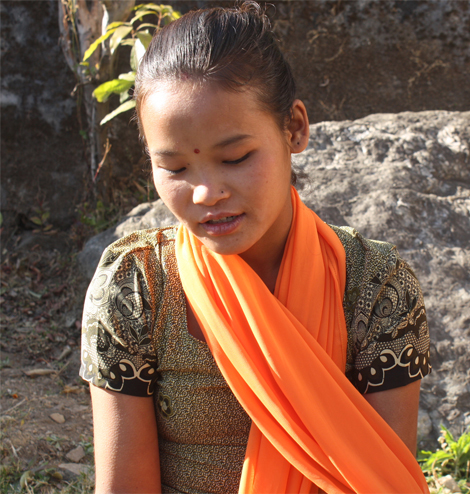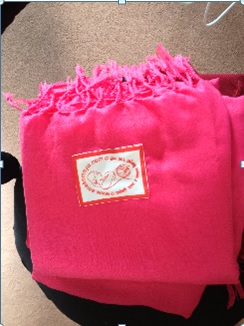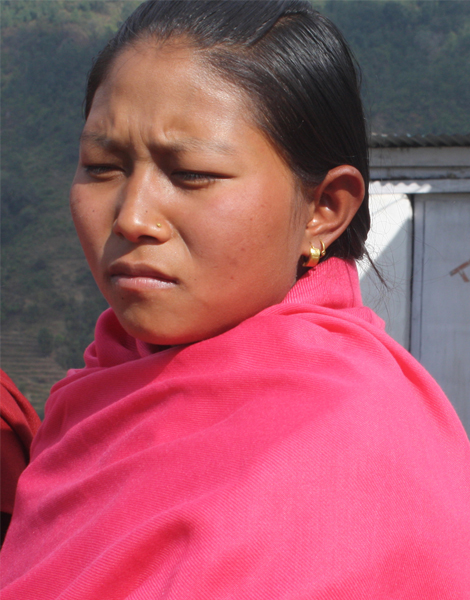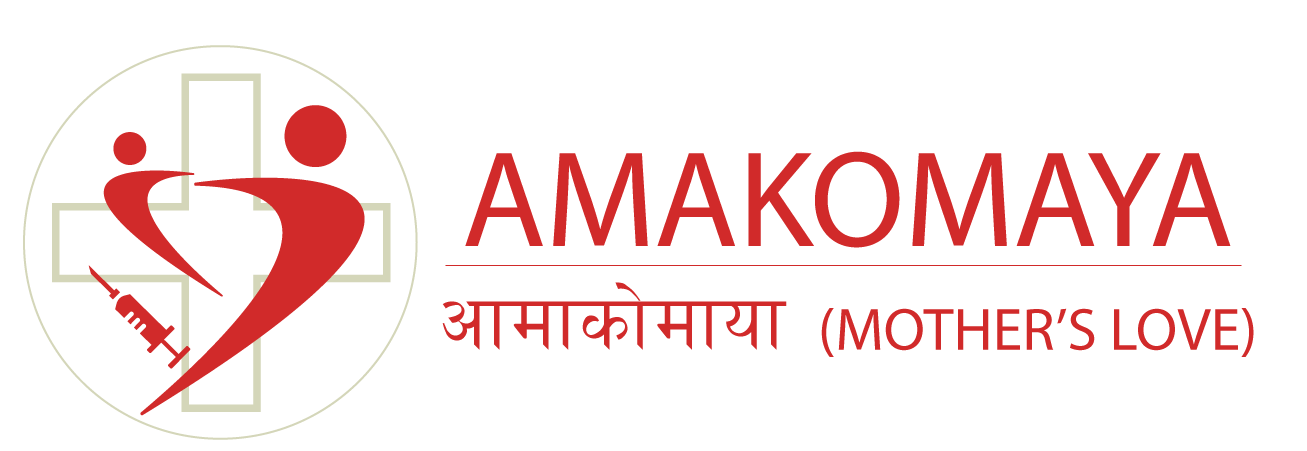Rural Women are deleting Songs from their Cell Phone
~ 2013-01-15
Anu Gurung, 16 years old from Thulogau, Rasuwa, excited and requested to delete all the collected popular folk songs and music videos from her micro SD card of cell phone. She wants enough space in her micro SD card for audio and video contents related to antenatal care information, provided by www.amakomaya.com, a web application developed by Mother and Child Protection (MnCP) Program to support the pregnant women during their pregnancy period. “For the first time, we come to know that we can watch amazing videos about the growing up process of our baby in tiny mobile”, Anu said with smiled and shy face. Similar excitement exists with pregnant women from Lumle, Shika, Histan, Ramche, and Danda Gaun VDCs of Nepal. Internet Society (ISOC), an International not-for profit organization, has supported this initiative through the Next Generation Leadership (NGL) program under small community grant scheme.

Since Nepal reduced the maternal mortality rate (MMR) from 415 deaths in 2,000 to 229 deaths in 2010 per 100,000 live births, Nepal has received an MDG Award for outstanding national leadership, commitment and progress toward achievement of Millennium Development Goal on “Improve Maternal Health”. Still challenges and disparities remain in remote mountain villages of Nepal. The recent research study conducted by Mother and Child Protection (MnCP) Program has found that less than 58.06% of pregnant women getting antenatal health care information from FM radios and television broadcast, 64.51% of pregnant women from FCHV and 41.93 % of pregnant women from family members. According to the research, some computer literate pregnant women uses social sites like facebook and Email internet but none of them are informed about antennal care information that persists in Internet and Mobile Technology.
Ganga Adhikari, 29 years old pregnant woman from Thumkodada, Tarakang-8 uttered,”I know that many antenatal care programs broadcasted in Radio and television but I could listen or watch them because for most of the time I should be busy with household works. After completion of my work I either like to watch Television Serials or feel sleepy”. The team leader of the program Mr. Rajendra Poudel said “Large numbers of women in rural Nepal turn on Radio and Television only for entertainment purpose rather than to access information to support their daily life. It is the main reason that we have seriously considered this issue as a challenge for developing motivational and enjoyable pregnancy related content for pregnant women”.
The main objective of MnCP program is to introduce localized ICT tools into the life of the rural illiterate women so that it will directly enhance the digital literacy rate and improve their communication skills and social behaviors. According to MIS report of Nepal Telecom Authority (NTA), Nepal has crossed 60.34% of mobile penetration rate. A survey conducted among 33 pregnant women from Shikha, Histan and Ramche VDCs of Myagdi district of Western Nepal shows that 100% of pregnant women possess a mobile set but none of them used it as tool to access information related with antenatal care information. The MnCP program downloaded 5 video and 17 audio materials related to antenatal care in each of the mobile set owned by the pregnant women. Maya Purja, from RamcheVDC-1, could not yet believe that her simple mobile set can store those amazing video and audio materials which could really support her. The MnCP program created audio and video materials that can be played in mobile devices. A Software Engineer at amakomaya.com Mr. Amit Batajoo stated “We have not done bigger work but created content that are necessary for pregnant women. Most of rural women have started using mobile set to watch and listen the audio-visual matrials. And it has being popular among rural people!”.
Ganga Adhikari, 29 years old pregnant woman from Thumkodada, Tarakang-8 uttered,”I know that many antenatal care programs broadcasted in Radio and television but I could listen or watch them because for most of the time I should be busy with household works. After completion of my work I either like to watch Television Serials or feel sleepy”. The team leader of the program Mr. Rajendra Poudel said “Large numbers of women in rural Nepal turn on Radio and Television only for entertainment purpose rather than to access information to support their daily life. It is the main reason that we have seriously considered this issue as a challenge for developing motivational and enjoyable pregnancy related content for pregnant women”.
The main objective of MnCP program is to introduce localized ICT tools into the life of the rural illiterate women so that it will directly enhance the digital literacy rate and improve their communication skills and social behaviors. According to MIS report of Nepal Telecom Authority (NTA), Nepal has crossed 60.34% of mobile penetration rate. A survey conducted among 33 pregnant women from Shikha, Histan and Ramche VDCs of Myagdi district of Western Nepal shows that 100% of pregnant women possess a mobile set but none of them used it as tool to access information related with antenatal care information. The MnCP program downloaded 5 video and 17 audio materials related to antenatal care in each of the mobile set owned by the pregnant women. Maya Purja, from RamcheVDC-1, could not yet believe that her simple mobile set can store those amazing video and audio materials which could really support her. The MnCP program created audio and video materials that can be played in mobile devices. A Software Engineer at amakomaya.com Mr. Amit Batajoo stated “We have not done bigger work but created content that are necessary for pregnant women. Most of rural women have started using mobile set to watch and listen the audio-visual matrials. And it has being popular among rural people!”.

Moreover, pregnant women can register in www.amakomaya.com, with their last menstrual period (LMP) and select health post and FCHV which is close to her. As she login with her username and password she can start to get antenatal care related audio, video and text contents based on her pregnancy running period. Doctor and Health worker can also login to track and support pregnant women under their supervision. The main objective of this web application is to establish network among pregnant women, FCHV, health Post and city hospital and monitor the situation of pregnant women. Since Nepal’s internet penetration rate is just exceeding 19.32% and its density is higher in city and urban areas of Nepal. Rajendra Poudel explained “We are not expecting pregnant women from remote mountain village with direct access to this web application and get benefited. But Nepal wireless network (NWP) leaded by Mahabir Pun has already networked more than 200 villages have connected health post and most of them have installed PC. So we like to develop health post as ICT hub to download and distribute audio/video contents to the mobile set of pregnant women.”Surendra Prasad Bhagat, a doctor at Health Post in Danda Gaun VDC of Rasuwa District told that amakomaya.com web application helping him by different ways. He added that it is helpful for convincing rural illiterate women by videos in local language and increasing their visit to health post for regular checkup during her pregnancy period and vaccination.


This is one of the brighter achievements of the program. The videos used are customized in local language from babycenter.com and seventeen motivational audios are originally created which explained about how their baby is growing up inside their tummy and how her body is changing rapidly. The contents are in Nepali language and have given enough examples are in the local context. The delivery of contents to pregnant women has been defined on the base of the research findings from the base line survey conducted in 2011.Baseline survey has found that majority of critical situation are occurring after seven months of pregnancy period. This is crucial time where pregnant women need help and special care from others. But in rural village pregnant women are compelled to go far to collect grass or fire woods from Forest.Gauri Gurung, 27 years old from Thulo Gaun of Rasuwa is a real evidence for this case. She slipped down while collecting grass for cattle far away from her home while she was running in 8 months of pregnancy. After few days she gave a birth of a baby but it died 2 hours latter. Neither she nor her family had tried to find out the cause. She is pregnant again. Not only Gauri, Devi Purja (35 years old) from Ramche-2 village, expresses her sad experience of delivering death baby when she got accident during her 6 month of pregnancy and lack of awareness for visiting health post . Amit Batajoo said “Families in village shall watch the contents and obviously be be encouraged to pay proper attention to the pregnant member”. He added, “The targeted audience of the content related to seventh month of pregnancy are family members of pregnant women.”


To foster the participation of pregnant women in community oriented programs, the team distributed shawls with logo of pregnant woman and “Save Pregnant Woman and Newly born baby” slogan. Women with the shawl identify pregnant women and they should given higher priority in natural disaster or any accidents. People are obliged to provide comfortable seats to the women carrying the shawl in their travel to work and support them in difficult situations. The practice of women carrying a symbol of pregnancy is found in developed countries like Japan where pregnant women are given a key hanger with pregnancy logo when they are found positive in their pregnancy test in authorized clinic. Although the program was short, it was successful in changing the behavior of pregnant women through motivational audio and video contents. Yet in the country, there is large number of poor woman who neither have access to the smart phone nor the audio and the video contents. The need of cheaper and affordable devices for all women to have equal access over the technology is undeniable.
